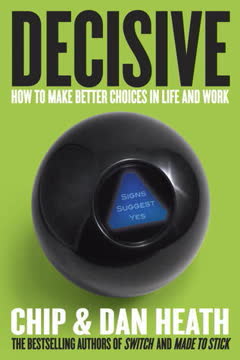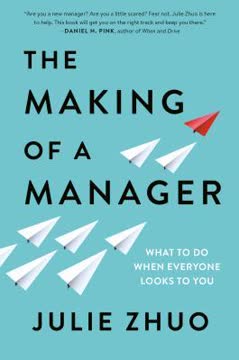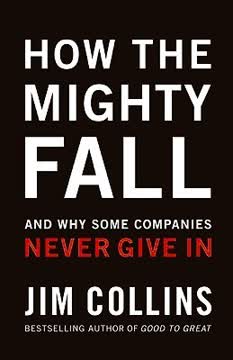重点摘要
1. 聪明工作,而不是更努力:专注于价值和有针对性的努力
聪明工作意味着通过选择少数活动并应用强烈的针对性努力来最大化工作价值。
重新思考生产力。 传统的成功观念往往强调更长的工作时间和承担更多的责任。然而,这种“更努力工作”的方法可能导致倦怠和收益递减。相反,顶尖表现者通过选择性参与和集中努力来最大化工作价值。
接受七个实践。 汉森的研究确定了区分顶尖表现者的七个关键实践:
- 做得少,然后痴迷
- 重新设计工作
- 不仅仅是学习,而是循环
- 将激情与目的匹配
- 强力倡导
- 争斗并团结
- 有纪律地合作
这些实践结合在一起,占研究中5000人表现差异的66%。通过采用这些策略,个人可以显著提高工作表现,而不牺牲个人福祉。
2. 做得少,然后痴迷:缩小范围并出类拔萃
尽可能少,但必须尽可能多。
专注并出类拔萃。 顶尖表现者选择有限的优先事项,并在这些领域投入巨大的努力。这种方法使他们能够产生卓越的结果,同时避免分散精力或陷入不必要的复杂性。
实施实用策略:
- 应用奥卡姆剃刀:消除不必要的任务、会议和责任
- 将自己绑在桅杆上:创建规则和系统以抵制干扰
- 学会说“不”:管理期望并拒绝非必要的承诺
- 痴迷于质量:一旦缩小了焦点,就在选择的领域追求卓越
通过掌握做得少并痴迷的艺术,个人可以将其表现排名提高多达25个百分点。
3. 重新设计工作以最大化价值创造
完美最终不是在没有什么可添加的时候达到,而是在没有什么可去除的时候达到。
创造价值,而不仅仅是活动。 许多人将忙碌与生产力混淆,专注于完成任务而不是产生有意义的结果。要真正出类拔萃,重新设计工作以优先考虑为他人创造实质性价值的活动——无论是你的组织、同事还是客户。
有效重新设计的策略:
- 寻找痛点:识别并解决工作场所的持续问题
- 提问“愚蠢”的问题:挑战假设并寻找创新解决方案
- 展示,而不仅仅是讲述:用生动的演示传达想法并激发变革
- 衡量影响,而不仅仅是输出:专注于你的工作给他人带来的好处
记住,小的改变可以产生显著的结果。就像迈克尔·本尼克博士对夜间抽血的简单调整显著提高了患者满意度评分一样,寻找通过深思熟虑的重新设计来进行有影响力改进的机会。
4. 不仅仅是学习,而是循环:通过高质量反馈不断改进
聪明工作意味着通过选择少数活动并应用强烈的针对性努力来最大化工作价值。
接受刻意练习。 虽然“1万小时法则”普及了掌握需要大量重复的想法,但汉森的研究表明,练习的质量比数量更重要。学习循环——一种适应工作场所的刻意练习版本——包括尝试新方法、衡量结果、获得快速反馈并相应地修改行为。
有效学习循环的关键策略:
- 每天抽出15分钟进行集中改进
- 将复杂技能分解为可管理的微行为
- 通过具体、可观察的行动衡量“软”技能
- 从同事和导师那里寻求灵活、快速的反馈
- 接受尝试新方法带来的表现下降
- 通过不断挑战自己来超越停滞点
通过掌握学习循环,个人可以显著提高其表现,可能从领域的第50百分位提升到第75百分位。
5. 将激情与目的匹配以达到最佳表现
目的问:“我能给世界什么?”激情问:“世界能给我什么?”
找到甜蜜点。 虽然追随自己的激情常被认为是成功的关键,但汉森的研究表明,仅有激情可能是危险的。相反,顶尖表现者将他们的激情与强烈的目的感相匹配——为他人或社会贡献价值。这种“P平方”方法带来了更高的工作满意度、减少的倦怠和改进的表现。
增强激情和目的的策略:
- 扩大你的激情圈:探索工作中让你充满活力的各个方面(例如,成就、创造力、社交互动)
- 攀登目的金字塔:
- 在不造成伤害的情况下贡献价值
- 在工作中创造个人意义
- 寻求强烈的社会使命
- 寻找与激情和目的相匹配的新角色
- 控制激情以保持工作与生活的平衡
成功将激情与目的匹配的个人,其表现排名可能比缺乏其中任何一个或两者的人高出18个百分点。
6. 强力倡导:用聪明的毅力激励和影响
人们会忘记你说过什么,人们会忘记你做过什么,但人们永远不会忘记你让他们的感觉。
掌握倡导的艺术。 在当今互联的工作场所,成功往往取决于获得他人的支持。强力倡导者擅长通过情感吸引和战略性坚持来激励同事并克服反对。
强力倡导者的两个关键技能:
-
通过唤起情感来激励他人:
- 排列高唤起情感(例如,让人们对现状感到不满并对未来感到兴奋)
- 展示,而不仅仅是讲述(使用生动的演示)
- 将日常工作与更广泛的目的联系起来
-
应用聪明的毅力克服障碍:
- 同情对手以理解他们的观点
- 必要时做出战略性让步
- 通过邀请对手参与来争取他们
- 动员盟友为你倡导
掌握这些技能可以将个人的表现排名提高多达15个百分点。
7. 争斗并团结:促进建设性辩论和团队承诺
尽可能少,但必须尽可能多。
接受建设性冲突。 高绩效团队进行严格的辩论以探索想法并审查假设。然而,他们也知道如何在做出决定后团结一致。这种“争斗并团结”的方法带来了更好的结果和更强的团队凝聚力。
有效争斗和团结的策略:
-
争斗:
- 寻求多样性,而不仅仅是人才
- 创造心理安全以进行开放讨论
- 鼓励安静的成员发言
- 提问非引导性问题以促进诚实对话
-
团结:
- 确保每个人在决策过程中都有发言权
- 即使不同意也要承诺执行决定
- 面对破坏团队团结的“自大狂”
- 明确团队目标以对齐努力
通过掌握争斗和团结的艺术,团队可以做出更好的决策并更有效地实施,从而提高整体表现。
8. 有纪律地合作:明智选择合作伙伴以获得最佳结果
合作的目标不是合作,而是更好的表现。
避免合作极端。 许多组织在合作不足(孤岛工作)或过度合作(过多的会议和合作伙伴关系)之间挣扎。有纪律的合作涉及仔细选择高价值的合作努力并有效实施。
有纪律合作的五条规则:
- 为每次合作建立令人信服的商业案例
- 制定一个激励所有参与者的统一目标
- 奖励合作结果,而不仅仅是活动
- 全力投入资源(时间、技能、资金)到选择的合作中
- 针对特定的合作伙伴挑战定制建立信任的策略
通过实践有纪律的合作,个人可以将其表现排名提高多达14个百分点。有趣的是,研究发现,女性从这种实践中受益的程度是男性的两倍。
9. 通过更聪明的工作实践实现工作与生活的平衡
在工作中表现出色,注入激情和强烈的目的感,同时也过上美好的生活。这有多棒?
重新定义成功。 与普遍看法相反,顶尖表现者不会为了职业成功而牺牲个人生活。相反,他们通过更聪明地工作而不是更努力地工作来实现更好的工作与生活平衡。这七个实践不仅提高了工作表现,还增强了整体福祉。
平衡工作与生活的关键策略:
- 明智地花费你的时间红利:将一些时间节省重新投资于工作,但将其余时间分配给个人生活
- 控制激情:不要让工作热情占据你的整个生活
- 管理情绪动荡:学会将个人情感与专业辩论分开
通过采用这些实践,个人可以在工作中取得卓越表现,同时拥有充实的个人生活。研究发现,掌握这七个实践占参与者工作相关福祉差异的29%,包括改善工作与生活的平衡、减少倦怠和提高工作满意度。
最后更新日期:
FAQ
What's Great at Work about?
- Focus on Performance: Great at Work by Morten T. Hansen explores how individuals can achieve exceptional performance by working smarter, not harder.
- Seven Work Smart Practices: The book outlines seven specific practices that top performers use to maximize their output and effectiveness.
- Passion and Purpose: It emphasizes the importance of aligning passion with purpose to enhance motivation and performance.
Why should I read Great at Work?
- Evidence-Based Insights: The book is grounded in empirical research, providing scientifically validated strategies for improving work performance.
- Practical Framework: Hansen offers actionable advice and real-life examples that readers can apply to their daily work routines.
- Improved Work-Life Balance: By adopting the practices, readers can achieve better work-life balance and greater job satisfaction.
What are the key takeaways of Great at Work?
- Work Smart, Not Hard: The central theme is that working longer hours does not equate to better performance.
- Seven Practices for Success: The book identifies seven key practices, such as disciplined collaboration and rigorous teamwork.
- Passion and Purpose Matter: Matching passion with purpose is crucial for sustained motivation and performance.
What is the "Do Less, Then Obsess" principle in Great at Work?
- Focus on Priorities: This principle emphasizes selecting a few key priorities and dedicating intense effort to excel in those areas.
- Quality Over Quantity: By doing less, individuals can focus on producing higher quality work.
- Statistical Evidence: Hansen's research shows that this practice leads to significantly higher performance rankings.
How does Great at Work define "Redesign Your Work"?
- Creating Value: Redesigning work involves rethinking tasks to maximize value creation.
- Eliminating Waste: The practice encourages cutting out unnecessary tasks and streamlining processes.
- Real-World Examples: The book provides case studies illustrating how innovative redesign can lead to significant improvements.
What is the "Learning Loop" concept in Great at Work?
- Continuous Improvement: The learning loop is a method for ongoing skill development while performing daily tasks.
- Micro-Behaviors: It involves breaking down skills into manageable micro-behaviors for focused improvement.
- Enhanced Performance: Research indicates that individuals who engage in the learning loop significantly outperform others.
How does Great at Work address the importance of passion and purpose?
- P-Squared Concept: Hansen introduces matching passion with purpose as a key driver of performance.
- Broader Definition of Purpose: Purpose includes creating value for organizations, not just social contributions.
- Statistical Correlation: Those who achieve P-squared perform significantly better than those who lack either passion or purpose.
What are the seven work smart practices outlined in Great at Work?
- Do Less, Then Obsess: Focus on a few key priorities and dedicate intense effort to excel.
- Redesign Your Work: Rethink tasks to maximize value and eliminate waste.
- Don’t Just Learn, Loop: Engage in continuous learning through a structured feedback loop.
- P-Squared (Passion and Purpose): Match personal passion with a sense of purpose.
- Forceful Champions: Advocate for goals by inspiring others and applying smart grit.
- Fight and Unite: Encourage healthy debate in teams while fostering commitment.
- Disciplined Collaboration: Collaborate effectively by choosing the right projects.
How does Great at Work define disciplined collaboration?
- Balanced Approach: It balances the need for collaboration with the risks of over- and under-collaboration.
- Five Rules: Establish a compelling business case, craft a unifying goal, reward results, commit resources, and engineer trust.
- Avoiding Collaboration Pitfalls: Excessive collaboration can lead to inefficiencies and burnout.
How does Great at Work address the concept of fighting and uniting in teams?
- Constructive Conflict: Emphasizes the value of constructive conflict in team settings for better decision-making.
- Commitment to Decisions: Team members should unite behind the final decision after rigorous debate.
- Avoiding Groupthink: Encourages open dialogue and dissenting opinions to prevent poor decisions.
What are the best quotes from Great at Work and what do they mean?
- “Do less, then obsess.”: Focus on fewer tasks and dedicate intense effort for greater success.
- “The way to work smart is to maximize the value of your work.”: Encourages creating value through thoughtful work practices.
- “People will never forget how you made them feel.”: Highlights the importance of emotional connections in the workplace.
How can I apply the concepts from Great at Work in my own job?
- Identify Key Priorities: Determine which tasks are most important and focus on excelling in those.
- Redesign Your Work Processes: Streamline tasks and eliminate unnecessary activities to create more value.
- Engage in Continuous Learning: Implement the learning loop by reflecting on work and seeking feedback.
What are the common pitfalls to avoid according to Great at Work?
- Overcommitting: Taking on too many tasks can lead to burnout and decreased performance.
- Neglecting Collaboration Quality: Overcollaboration can hinder productivity; focus on meaningful collaborations.
- Ignoring Passion and Purpose: Balance passion with purpose to prevent work-life imbalance.
评论
《卓越工作》获得了褒贬不一的评价,许多人称赞其关于提高工作表现的实用建议。读者们欣赏其基于研究的方法和清晰的工作原则。主要收获包括专注于更少的优先事项,将激情与目标相结合,以及改善协作。一些人批评这本书过于简化复杂的工作场景,并依赖于轶事。总体而言,评论者认为这是一本有助于提高生产力和工作生活平衡的实用指南,尽管有些人质疑其建议背后的研究的科学严谨性。
Similar Books














